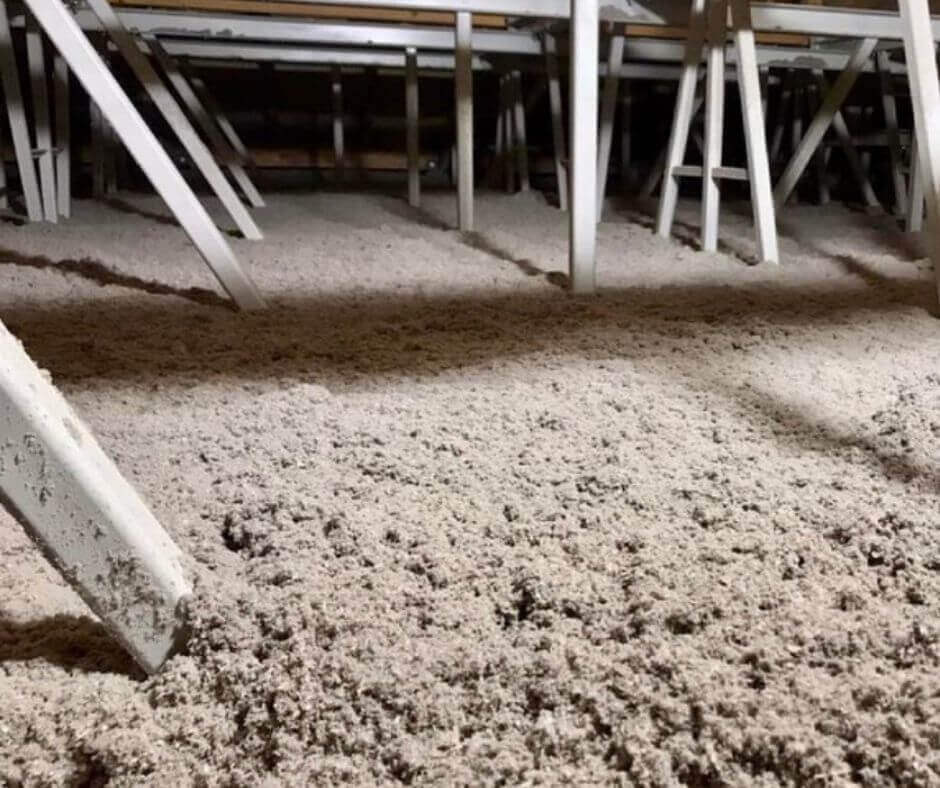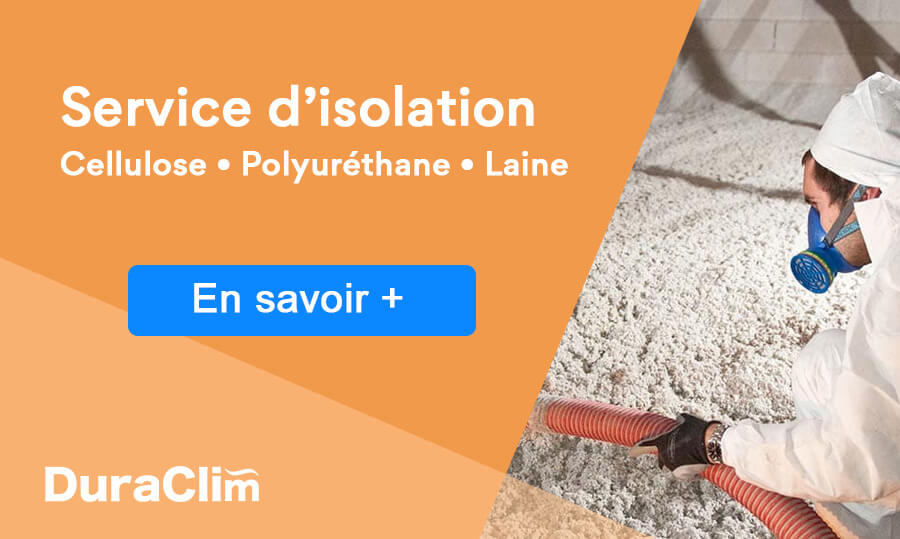When we address the issue of insulation in houses, it is common to primarily focus on the exterior aspect of the roof. However, there is a crucial component inside our homes and buildings that plays a significant role: the attic. The insulation of the attic represents a smart investment and should be a major concern for all homeowners mindful of their energy consumption.
Did you know that during the winter, over 30% of our heat escapes through the attic?
Its role is essential for preserving indoor air quality, ensuring comfort, and enhancing the energy efficiency of your home while also reducing energy costs.
The attic, an essential role?
As you may know, Quebec experiences harsh winters as well as very hot and humid summers. However, it might be surprising to discover that the temperature inside an attic can fluctuate from -35 to +60 degrees Celsius over the course of a year. This highlights the extreme conditions to which this space is exposed.
Imagine the attic as an invisible shield working behind the scenes to maintain your interior at the ideal temperature. When the sun shines intensely, it prevents heat from infiltrating, thus maintaining a cool indoor environment. During cold weather, it prevents heat loss, ensuring the retention of warmth indoors, protecting you from the cold outside. Its mission remains constant: to prevent the unwanted penetration of heat, cold, and humidity into livable spaces
Poor Insulation
Several factors can contribute to poor insulation, including inadequate insulation material, compromised vapor barriers, faulty sealing, or installation errors. Moreover, issues like excessive condensation and mold growth can exacerbate insulation deficiencies, leading to energy inefficiency and discomfort for occupants.
Mold is one of the most concerning problems resulting from poor insulation. When moisture infiltrates a poorly insulated space, it creates an environment conducive to mold growth. This mold can not only damage your building’s structure but also pose health risks, especially to those who are allergic or sensitive. It can cause respiratory problems, skin irritations, and other undesirable symptoms.
In summary, attic insulation is a crucial aspect of managing energy efficiency and comfort in your building to maintain a comfortable temperature. It is essential to understand the specifics of your attic, consider ventilation, and prevent mold formation to ensure optimal results. To identify and address insulation issues, it is strongly recommended to seek the services of a reliable company and experienced professionals for accurate assessments.
For Adequate Insulation: What Types of Insulation to Choose?
Every insulation project is unique, with its own technical constraints. Easily accessible attics often provide the best opportunities in terms of comfort and energy savings. However, inaccessible or hard-to-reach attics require a more thoughtful approach, often in combination with other work.
Blown Cellulose: A Versatile Solution
Cellulose insulation is an insulation option that comes with various benefits, especially when used to insulate attics. Here’s why this solution is gaining popularity:
- Thermal and Acoustic Insulation
Blown cellulose excels as both thermal and acoustic insulation. When applied in the attic, cellulose insulation creates an effective barrier against external temperature fluctuations, helping to maintain comfort inside your home throughout the year. Additionally, it helps reduce unwanted noise, further enhancing your space’s comfort.
- Natural and Durable
A significant advantage of cellulose insulation is its environmentally friendly and durable nature. It is made from recycled materials (recycled paper and cardboard), making it an eco-conscious choice. Furthermore, it has good resistance to decay, fire, and pests, ensuring remarkable longevity.
- Affordable Cost
One of the major advantages of cellulose insulation is its affordability. As a readily available natural insulator on the market, it offers excellent thermal performance without breaking the bank. This makes it a popular choice for new construction and renovation projects.
- Long Lifespan
Cellulose insulation has excellent durability that can last for several decades. Its typical lifespan ranges from 40 to 50 years, meaning you can enjoy its benefits for many years without worrying about replacement.
Polyurethane: The Elite of Attic Insulation
Polyurethane rises to the top of the list when it comes to conserving heat in attics. Here’s why it is also a preferred choice:
- Exceptional Thermal
Insulation Polyurethane is renowned for its exceptional thermal insulation properties. When applied in the attic, it creates an almost airtight barrier against external temperature fluctuations. It effectively retains heat inside your space, thus reducing heating costs.
- Thermal and Fire Resistance
In addition to its excellent insulating properties, polyurethane also offers impressive thermal resistance. It can provide fire resistance ranging from 45 to 80 minutes, contributing to the safety of your building.
The R-Value – What Is It?
When you’re considering improving your home’s insulation, it’s essential to understand the meaning and importance of the R-value. The R-value is a fundamental criterion in thermal insulation because it quantifies the thermal resistance of a material or insulation system. This measurement tells us about a material’s ability to slow down the transfer of heat through it, which has a significant impact on the energy efficiency of your home.
In simple terms, a higher R-value indicates better thermal insulation. This means that the material in question is highly effective at reducing heat loss during the cold months of the year, creating a more comfortable indoor environment while lowering your heating costs. Additionally, a high R-value provides effective protection against outdoor heat in the summer, helping to maintain a pleasant indoor temperature during the hot months.
In other words, the R-value is a key indicator of your insulation’s performance. The higher this value, the more energy-efficient your home will be, leading to significant reductions in your heating or cooling bills while reducing your carbon footprint.
If you want to learn more about the R-value and how to calculate insulation levels, I invite you to check out the insights provided by our Director of Operations at DuraClim by following this link (note: the article is in French).
Whether you choose blown cellulose or polyurethane to insulate your attic, you’ll experience a significant improvement in energy efficiency (reduced energy bills and consumption) and the comfort of your space. These high-quality insulators are designed to last, ensuring years of optimal thermal and acoustic comfort.
Contact DuraClim!
Avoid the negative effects of poor insulation by using our insulation services! We’ll help you find the right solution based on your needs and the specific constraints of your situation. Contact us now to receive your precise quote, and our insulation specialists will be with you in the coming days.




